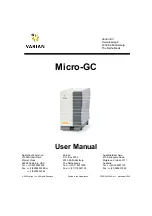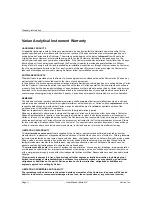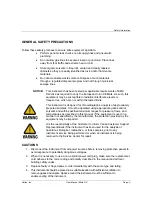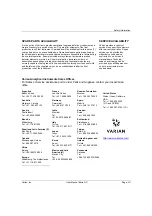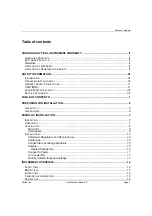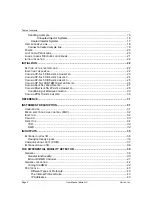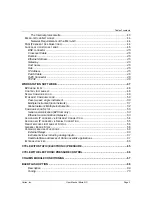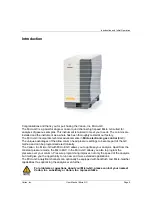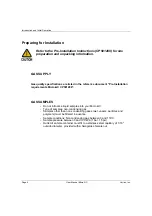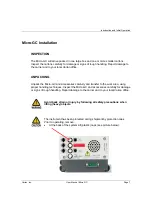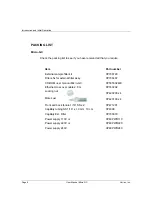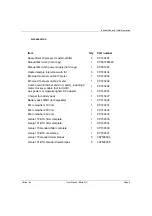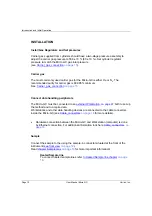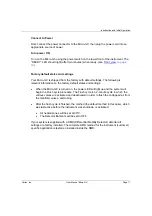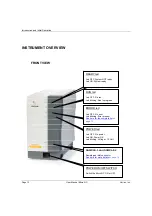
Safety Information
Varian, Inc.
User Manual Micro-GC
Page: V
GENERAL SAFETY PRECAUTIONS
Follow these safety practices to ensure safe equipment operation.
Perform periodic leak checks on all supply lines and pneumatic
plumbing.
Do not allow gas lines to become kinked or punctured. Place lines
away from foot traffic and extreme heat or cold.
Store organic solvents in fireproof, vented and clearly labeled
cabinets so they are easily identified as toxic and/or flammable
materials.
Do not accumulate waste solvents. Dispose of such materials
through a regulated disposal program and not through municipal
sewage lines.
NOTICE:
This instrument has been tested per applicable requirements of EMC
Directive as required to carry the European Union CE Mark. As such, this
equipment may be susceptible to radiation/interference levels or
frequencies, which are not within the tested limits.
This instrument is designed for chromatographic analysis of appropriately
prepared samples. It must be operated using appropriate gases and/or
solvents and within specified maximum ranges for pressure, flows, and
temperatures as described in this manual. If the equipment is used in a
manner not specified by the manufacturer, the protection provided by the
equipment may be impaired.
It is the responsibility of the Customer to inform Varian Customer Support
Representatives if the instrument has been used for the analysis of
hazardous biological, radioactive, or toxic samples, prior to any
instrument service being performed or when an instrument is being
returned to the Service Center for repair.
CAUTIONS
1. Disconnect the instrument from all power sources before removing protective panels to
avoid exposure to potentially dangerous voltages.
2. When it is necessary to use a non-original power cord plug, make sure the replacement
cord adheres to the color-coding and polarity described in the manual and all local
building safety codes.
3. Replace faulty or frayed power cords immediately with the same type and rating.
4. This instrument should be placed in a suitable location with sufficient ventilation to
remove gases and vapors. Space around the instrument must be sufficient to
enable cooling of the instrument.

